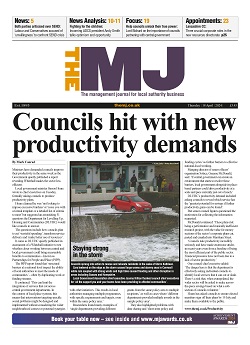What does it mean when your transformation programme is the least transformational thing happening to your organisation?
Leading change often means the biggest challenge is breaking organisational inertia to start the process of transformation. Now it’s hard to find a place where things aren’t in flux. Change is everywhere – so where does that leave your transformation plan?
While ‘no plan survives contact with the enemy’ – certainly not one so currently unpredictable as COVID-19 – it’s true that having a well-designed plan is going to help you react and adapt to changing circumstances. The question I see people struggling with right now is what are we adapting to?
I once heard Barry Quirk speak about his arrival at Kensington and Chelsea just after the Grenfell tragedy, and about understanding the difference between experiencing the reaction to an event and the true aftermath. There are parallels here as most of us are currently just dealing with the reaction to the crisis – we haven’t yet started to experience what comes next and we struggle to imagine it. In the midst of the mutuality and community effort we are all experiencing this pandemic in very different ways. What comes next will mean us synthesising and exploring our experience in order to shape a collective response.
We need to exercise our collective imagination to take advantage of the range of possible futures and hopefully shape one that helps our communities thrive. We need to create space for social imagination if we want to explore the full extent of possible futures.
What has this got to do with transformation?
As you start to talk about recovery, transformation plans need to be re-evaluated. Getting your change plan back on track can’t just mean heading to the same destination you had charted before – it’s as likely that your destination no longer exists as it is likely to be not ambitious enough for the degree of change you have achieved during this period of huge upheaval. You will know now what worked and what didn’t under huge stress in your organisation – this provides a different roadmap for change than the one you had planned before we went into lockdown.
As we move into recovery a transformation plan is the kind of thing that feels important; but if your transformation plan hasn’t been helping your organisation become more agile, adaptive and responsive then it’s the wrong plan. Often organisational agility, at least in the technical sense of digital transformation, is the ‘why’ of the plan. I’m arguing that agility needs to be the ‘how’. The why needs to be the vision that you are creating of the post-COVID future.
In re-examining your transformation plan there are a few things it’s worth reflecting on:
- Is the why, the purpose, of your plan still valid?
- What are you imagining for the right future?
- Is adapting the plan going to take more effort that just stopping it and starting something new?
- How can you go where the energy is? How can you build on the best bits of your council’s response that point the way to the future?
You’ll be doing most of this anyway – every organisation is re-evaluating on a daily basis as we plan for the possibilities on the other side of lockdown. I’m suggesting in doing so you think about the way in which you make change happen and why you are doing it – not just the creating of the plan for doing it. Imagine.
It’s still true that anyone with a plan will have the advantage – but it is the people with vision and imagination who will succeed.
Dr Catherine Howe is incoming director of communities at Adur & Worthing Councils

